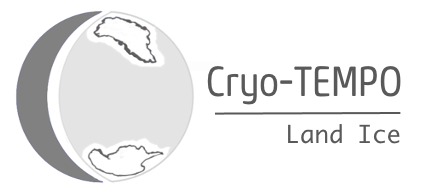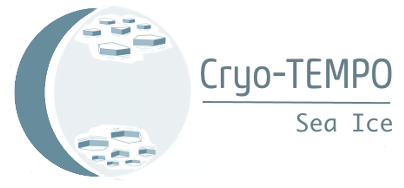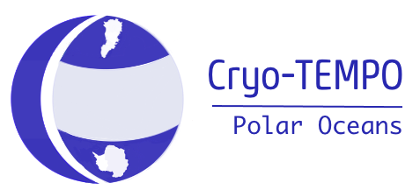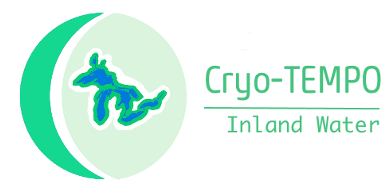The aim of the CryoTEMPO project is to deliver agile, robust and state-of-the-art CryoSat-2 products which are dedicated to specific Thematic Areas, and are accessible to - and can easily be used by - a broad range of scientific and service users. To achieve this aim, the main technical objectives are:
- To develop dedicated, state-ot-the-art processing algorithms over each thematic domain.
- To develop agile, adaptable processing workflows that are capable of rapid evolution and processing at high cadence.
- To create products that are driven by, and aligned with, user needs thereby opening up the data to new communities of non-altimetry experts.
- To deliver transparent, traceable uncertainties associated with each thematic parameter.

The Cryo-TEMPO Land Ice Thematic Product comprises quality-controlled measurements of ice sheet surface elevation derived using dedicated processing algorithms for land ice surfaces. Alongside surface elevation measurements, within each product are a set of parameters designed to assist the user in the use and interpretation of the data. These parameters include an estimate of measurement uncertainty, surface type, a reference elevation and the glaciological catchment from which the measurement was derived. The Cryo-TEMPO Land Ice product encompasses both grounded and floating parts of Greenland and Antarctica (i.e. inclusive of ice shelves and floating ice tongues) and covers the full duration of the CryoSat-2 mission operation (2010-present).

The main parameters in the Cryo-TEMPO Sea Ice product are radar freeboard and sea-ice freeboard. Freeboard is generally defined as the elevation of the sea ice surface above the local sea surface and represented by the variable sea ice freeboard in the product. Radar freeboard is similar to sea-ice freeboard with the exception of a geometric correction that depends on snow depth and density. Both freeboard values are distributed at the full resolution of the CryoSat-2 radar altimeter along the ground track for each polar orbit segment.

The Cryo-TEMPO Polar Ocean product provides a 10-year, quality controlled, record of sea level anomalies and dynamic ocean topography of the Arctic and Antarctic Ocean. As such it has a wide range of potential uses for both the specialist and non-specialist user, including the production time series of sea level rise, regional trend maps, ocean circulation, fresh water fractions and sea level budget. In turn these data can be used to study a diverse range of climatological and oceanographic processes.The main products in the Cryo-TEMPO Polar Ocean products are sea level anomaly and absolute dynamic topography.

The Cryo-TEMPO Coastal Ocean product provides a 10-year, quality controlled, record of along-track sea level anomalies (SLA) and absolute dynamic topography (ADT) over the Mediterranean basin. Due to the combination of CryoSat-2 SAR technology and the region-specific tuning of parameters of the the Cryo-TEMPO processing chain, this dataset is characterized by the highest accuracy and resolution for coastal applications.The Cryo-TEMPO Coastal Water Thematic Product covers the whole Mediterranean basin ranging from 6.4° W to 36.75° E in longitude and from 30° N to 46° N in latitude for the whole duration of the CryoSat-2 mission.

The Cryo-TEMPO Inland Water Thematic Product includes the water surface height over land water bodies. The algorithm for estimating this water level considers the signal reflected by inland waters as well as multiple geophysical corrections. Additionally, the uncertainty value and a quality flag associated with each measurement, included in the product, provide information on the reliability of the measurement. Finally, the information on the type of surface (based on GLWD3 dataset) and the occurrence of water (based on GSWE) give external and useful information for analysis of the thematic data.